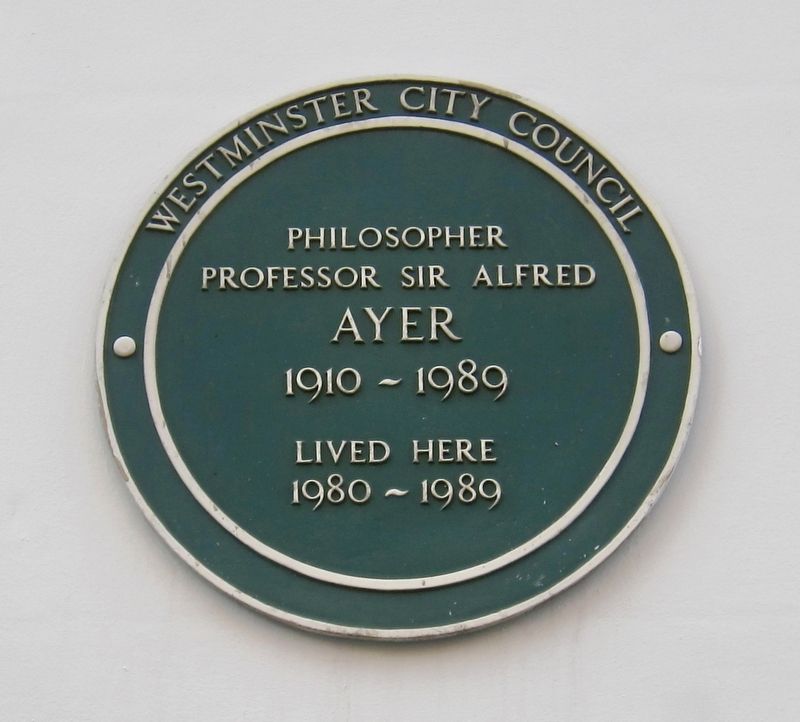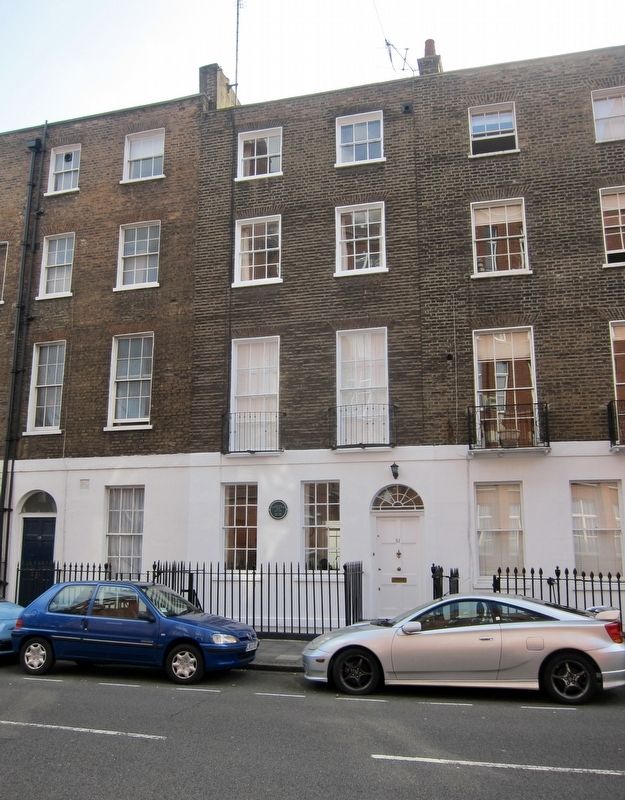City of Westminster in Greater London, England, United Kingdom — Northwestern Europe (the British Isles)
Sir Alfred Ayer
Professor Sir Alfred
Ayer
1910 - 1989
lived here
1980 - 1989
Erected by Westminster City Council.
Topics. This historical marker is listed in these topic lists: Arts, Letters, Music • Science & Medicine.
Location. 51° 31.21′ N, 0° 9.651′ W. Marker is in City of Westminster, England, in Greater London. Marker is on York Street just west of Upper Montagu Street, on the left when traveling west. Touch for map. Marker is at or near this postal address: 51 York Street, City of Westminster, England W1H 1PS, United Kingdom. Touch for directions.
Other nearby markers. At least 8 other markers are within walking distance of this marker. Jacqueline du Pré (within shouting distance of this marker); Sir Gerald Kelly (about 120 meters away, measured in a direct line); Tony Ray-Jones (about 150 meters away); John Lennon (about 180 meters away); Anthony Trollope (about 210 meters away); William Wilkie Collins (approx. 0.2 kilometers away); Benedict Arnold (approx. 0.2 kilometers away); John Robert Godley (approx. 0.3 kilometers away). Touch for a list and map of all markers in City of Westminster.
Also see . . . Alfred Jules Ayer (Stanford Encyclopedia of Philosophy). "A.J. Ayer (1910–1989) was only 24 when he wrote the book that made his philosophical name, Language, Truth, and Logic (hereafter LTL), published in 1936. In it he put forward what were understood to be the major theses of Logical Positivism, and so established himself as that movement's leading English representative. In endorsing these views Ayer saw himself as continuing in the line of British empiricism established by Locke and Hume, an empiricism whose most recent representative was Russell. Throughout his subsequent career he remained true to this tradition's rejection of the possibility of synthetic a priori knowledge, and so he saw the method of philosophy to be the analysis of the meaning of key terms, such as ‘causality’, ‘truth’, ‘knowledge’, ‘freedom’, and so on. The major portion of his work was devoted to exploring different facets of our claims to knowledge, particularly perceptual knowledge and knowledge that depended on inductive inference for its credence. Along the way he defended a ‘justified true belief’ account of knowledge, a Humean account of causation, and compatibilism with respect to freedom...." (Submitted on October 25, 2017.)
Credits. This page was last revised on January 27, 2022. It was originally submitted on October 25, 2017, by Andrew Ruppenstein of Lamorinda, California. This page has been viewed 167 times since then and 6 times this year. Photos: 1, 2. submitted on October 25, 2017, by Andrew Ruppenstein of Lamorinda, California.

